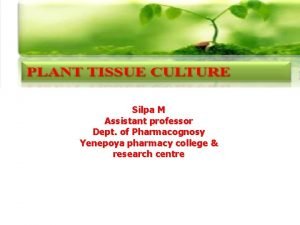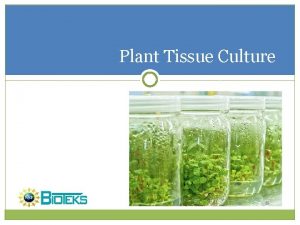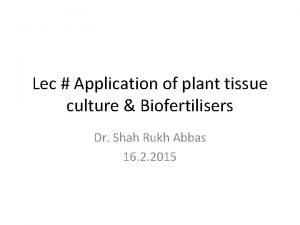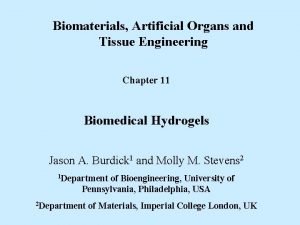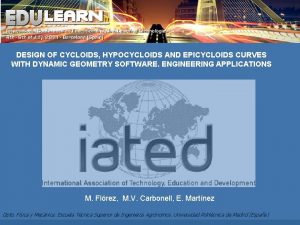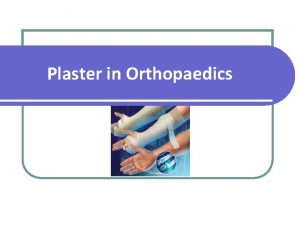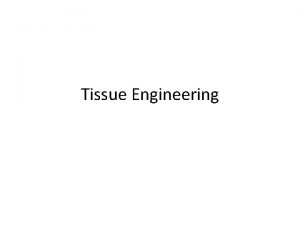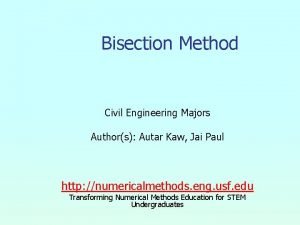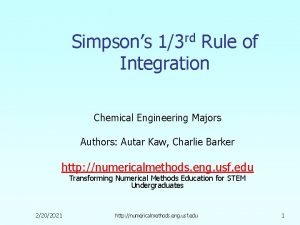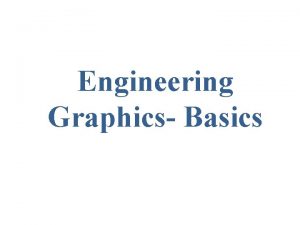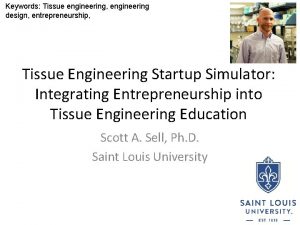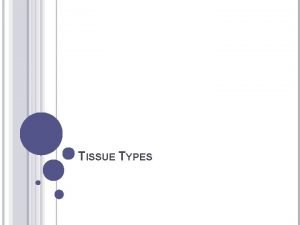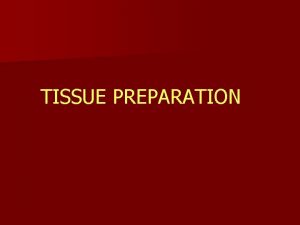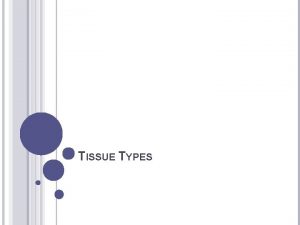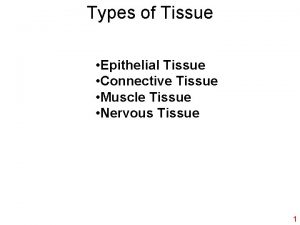Tissue Engineering Tissue Engineering Application of principles and

















- Slides: 17

Tissue Engineering

Tissue Engineering • “Application of principles and methods of engineering and life sciences toward fundamental understanding of structurefunction relationships in normal and pathological mammalian tissues and the development of biological substitutes to restore, maintain or improve tissue conditions. ”

Tissue Engineering • In 2007, US Federal R&D agencies have suggested an updated term and definition – Tissue Science and Engineering: the use of physical, chemical, biological and engineering processes to control and direct the aggregate behavior of cells

Tissue Engineering • Started in the late 1980 s (approved in 1987) – Draft definition by Allan Zelman: “The term ‘tissue engineering’ indicates a new inter-disciplinary initiative which has the goal of growing tissues or organs directly from a single cell taken from an individual. ”

Tissue Enggineering • Specific list of goals according to Eugene Bell: – 1) providing cellular prostheses or replacement parts for the human body; – 2) providing formed acellular replacement parts capable of inducing regeneration; – 3) providing tissue or organ-like model systems populated with cells for basic research and for many applied uses such as the study of disease states using aberrant cells; – 4) providing vehicles for delivering engineered cells to the organism; and – 5) surfacing non-biological devices.

Tissue Engineering • Research fields/subfields – Cell and developmental biology • • Cell differentiation, morphogenesis and tissue assembly Cell-cell and cell-matrix interactions Growth factors Cell isolation and selection Cell culture Angiogenesis Stem cells

Tissue Engineering • Research fields/subfields – Basic medical and veterinary sciences • anatomy • cytology • physiology and pathophysiology – Transplantation science • Applied immunology – immunosuppression, immunomodulation and immunoisolation • Organ preservation

Tissue Engineering • Research fields/subfields – Biomaterials • Natural and synthetic, biodegradable and nonbiodegradable polymers • Polymer chemistry • Ceramics • Cell interactions with biomaterials • Controlled release of bioactive molecules • Microencapsulation • Microfabrication techniques

Tissue Engineering • Research fields/subfields – Biomaterials (continued) • 3 D fabrication techniques • Surface Chemistry – Biophysics and biomechanics • Molecular and cell transport • Micro- and macrocirculatory dynamics • Cell and tissue mechanics

Tissue Engineering • Research fields/subfields – Biomedical engineering • • • Bioreactors Membranes and filtration Musculoskeletal joint engineering Biomedical sensors Biomedical signal processing, feedback and control Electrical and mechanical engineering of biohybrid systems Engineering design and systems analysis Quantitative tissue characterization Biosensors and biolectronics

Tissue Engineering • Examples – Vascular grafts – Skin grafts – Kidney – Pancreas/Islet cells – Liver – Bone/Cartilage • Either laboratory-based or over-the-counter

Tissue Engineering • Drawbacks – Cost – Specificity – Ethical issues • Animal use • Component synthesis (e. g. cells)

Regenerative Medicine

Regenerative Medicine • Greatly similar to tissue engineering – Overlapping field • “…encompasses some of the knowledge and practice of tissue engineering but also includes ‘self-healing through endogenous recruitment or exogenous delivery of appropriate cells, biomolecules, and supporting stuctures. ”

Xenotransplantation

Xenotransplantation • The transfer of an organ/tissue from one species to another – Humans using organs derived from animals • Low success rate • Excellent source of information for new therapies

Xenotransplantation • Drawbacks – Incompatibility – Issues regarding animal use • Cost • Ethics – Risks • Introduction of bacteria and viruses *HIV originated from monkeys
 Basic principle of ultrasonic testing
Basic principle of ultrasonic testing Jaringan epitel dapat ditemukan di
Jaringan epitel dapat ditemukan di Bergmann's plating technique
Bergmann's plating technique Tissue culture applications
Tissue culture applications Uses of plant tissue culture
Uses of plant tissue culture Biomaterials artificial organs and tissue engineering
Biomaterials artificial organs and tissue engineering Cycloid geogebra
Cycloid geogebra Principle and application of electrical engineering
Principle and application of electrical engineering Fiberglass cast disadvantages
Fiberglass cast disadvantages Principles and applications of electrical engineering
Principles and applications of electrical engineering Pearson engineering
Pearson engineering Tissue engineering definition
Tissue engineering definition Bisection method application in civil engineering
Bisection method application in civil engineering Application of trapezoidal rule in engineering
Application of trapezoidal rule in engineering Multiple segment simpson's 1/3 rule
Multiple segment simpson's 1/3 rule Web application engineering
Web application engineering Eraser shield definition
Eraser shield definition Rad software
Rad software


